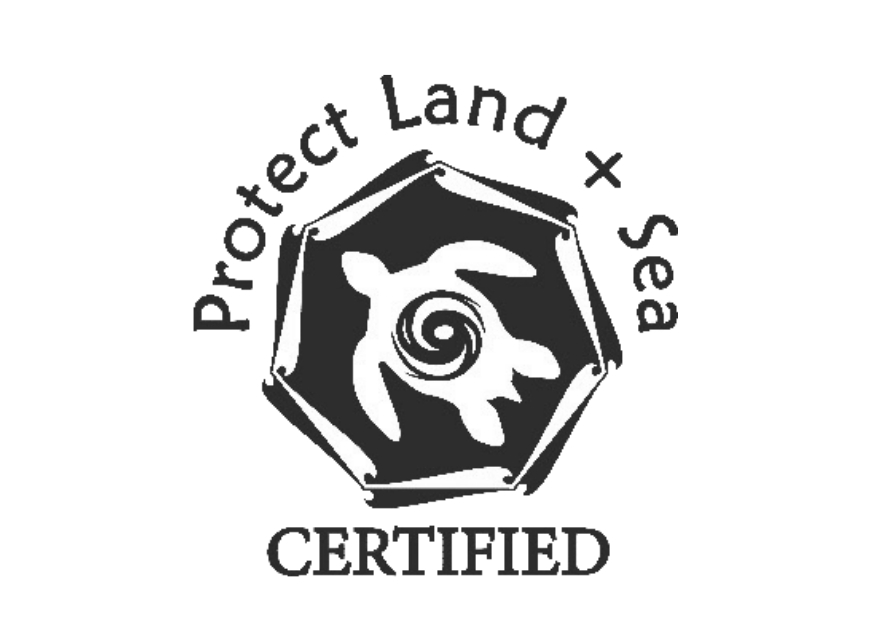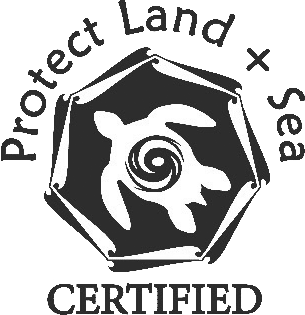When we talk about ocean pollution, plastic usually takes the spotlight, and reasonably so. It has been reported that plastic was found in the deepest part of our ocean- the Mariana Trench- and is present on shores and beaches around the world. Plastic pollution is a huge threat to our ecosystems, as it can entangle marine organisms or be ingested by them, possibly leading to starvation and death. Plastic pollution can even harm coral reefs by blocking sunlight from reaching their photosynthetic zooxanthellae, causing bleaching.
One invisible source of pollution can be even more damaging to coral reef ecosystems, and you may bring it into the ocean with you every time you go. Sunscreen is crucial to protecting our skin from sun damage, but did you know that some of the same molecules that protect our skin can be damaging to coral reefs?
Studies estimate that about 14,000 tons of sunscreen enter the ocean every year. The ingredients that have been used in sunscreen since the 1950s contain molecules that function to block UV rays from penetrating the skin. Unfortunately, some of these molecules have been found to damage corals and anemones in experimental studies.
Oxybenzone and Octinoxate are two such molecules that have been found to have detrimental impacts on corals and anemones. Studies have found that when exposed to Oxybenzone, sea anemones try to dissolve the molecule by adding a sugar molecule to it, and by doing so essentially transform the molecule from one that blocks UV rays into one that is activated by sunlight, creating a toxin that can cause bleaching. Octocrylene, another common UV-blocking molecule, has been found to damage corals by creating a build-up of fatty acid within their tissues, leading to mitochondrial dysfunction.
These UV-blocking molecules were introduced as an alternative to molecules such as Zinc that often leave an undesirable white cast on the skin. The use of these molecules began relatively recently, meaning the effects on marine ecosystems are still under investigation. Studies suggesting these molecules could be harmful to corals have caused some governments to ban products that include these ingredients. Key West, Hawaii, US Virgin Islands, Aruba, and Mexico are some of the places where the use and sale of some sunscreens have been banned because they include one or more ingredients indicated to damage reefs. In 2022, Hawaii County and Maui County expanded this ban to include all chemical sunscreens, leaving residents and visitors to resort to mineral sunscreens.
What can you do?
As a consumer, it can be difficult to determine the authenticity of reef-safe sunscreens. Some brands market themselves as “reef-friendly” while still containing ingredients that have been found to contribute to coral damage. Brands may claim this title because they do not include Oxybenzone or Octinoxate, however, they may still contain harmful ingredients such as Octocrylene, Homosalate and Avobenzone.
The best option to protect both your skin and the reefs is to cover your skin with UV-blocking fabric such as a rash guard or wetsuit. By doing so you ensure complete, long-lasting protection of your skin (we all forget to reapply!) and don’t have to worry about potentially harmful ingredients in your sunscreen.
If covering up isn’t your style- do your research! Relying on labels like “reef safe” and “reef-friendly” is unfortunately not an accurate way to assess the harm your sunscreen could cause. In order to be sure, you should read all the ingredients and look out for these harmful ones:
- Oxybenzone
- Octinoxate
- Octocrylene
- Homosalate
- 4-methylbenzylidene camphor
- PABA
- Parabens
- Triclosan
- Any microplastics such as “exfoliating beads”
- Nanoparticles or “nano-sized” particles
These ingredients are part of the Haereticus Environmental Laboratory (HEL) list. The entire HEL List should be utilized to avoid ingredients that have been found to be harmful to a multitude of environments, not limited to coral reefs. Consumers can also keep their eyes out for the Protect Land + Sea Certification Seal that guarantees that the product does not contain any ingredients from the HEL list.
Stream2Sea is one brand that made it their mission to develop a sunscreen that protects our skin and our oceans. Their mineral sunscreens are the only ones in the world that have been proven to be safe for coral larvae and fish in fresh and saltwater environments. Founded in Florida, Stream2Sea is a partner with many nonprofits including the International SeaKeepers Society, thereby supporting marine conservation efforts far and wide.
Being an environmentally conscious beachgoer is unfortunately not as simple as leaving with everything you brought, because we can unknowingly leave chemicals in the water that came with us on our clothing and skin. Being an ethical consumer can be confusing, as not only do you need to protect your skin from UV damage, but you need to protect the environmental ecosystem from harmful molecules in sun-blocking products. By sticking with mineral sunscreen and avoiding the ingredients on the HEL list, you can ensure the reefs last for future generations of swimmers to appreciate.
References
American Chemical Society. (2019, January 9). Sunscreen and cosmetics compound may harm
coral by altering fatty acids. ScienceDaily. Retrieved May 18, 2023 from
www.sciencedaily.com/releases/2019/01/190109110048.htm
Clark, T. (2023, March 24). Packing for Hawaii? know the latest on banned sunscreen
ingredients. Brush On Block.
https://brushonblock.com/blogs/news/packing-for-hawaii-make-sure-you-know-the-latest-sunscreen-bans#:~:text=In%202021%2C%20the%20state%20banned,and%20ecosystems%2C%20including%20coral%20reefs
Gibbens, S. (n.d.). Plastic bag found at the bottom of world’s deepest Ocean Trench. Education.
https://education.nationalgeographic.org/resource/plastic-bag-found-bottom-worlds-deepest-ocea
n-trench/6th-grade/#:~:text=It%20extends%20nearly%2010%2C975%20meters,known%20piece
%20of%20plastic%20trash
Haereticus. (n.d.). Protect Land + Sea Certification. Haereticus Environmental Laboratory.
Hall, D. (2022, September). The truth about corals and Sunscreen. The Truth About Corals and
Sunscreen.
https://ocean.si.edu/ecosystems/coral-reefs/truth-about-corals-and-sunscreen#:~:text=It%20is%2
0estimated%20that%20roughly,could%20be%20harming%20ocean%20life
Madhusoodanan, J. (2022, May 6). A common sunscreen ingredient turns toxic in the sea -
anemones suggest why. Nature News.
https://www.nature.com/articles/d41586-022-01271-4#ref-CR2
Our story - stream2sea: Tested & proven reef-safe sunscreen & skin care. Stream2Sea. (n.d.).
https://stream2sea.com/our-story/
Save the Reef. (n.d.). Reef Safe Sunscreen Guide. Save the Reef.
https://savethereef.org/about-reef-save-sunscreen.html
Stein, D., Clergeaud, F., Rodrigues, A., Lebaron, K, Pillot, R., Romans, P., Fagervold, S.,
Lebaron, P., (2019). Metabolomics Reveal That Octocrylene Accumulates in Pocillopora
damicornis Tissues as Fatty Acid Conjugates and Triggers Coral Cell Mitochondrial
Dysfunction. Analytical Chemistry 2019 91 (1), 990-995.
https://pubs.acs.org/doi/10.1021/acs.analchem.8b04187
Image sources:
Haereticus. (n.d.). Protect Land + Sea Certification. Haereticus Environmental Laboratory.
Save the Reef. (n.d.). Reef Safe Sunscreen Guide. Save the Reef.
https://savethereef.org/about-reef-save-sunscreen.html





